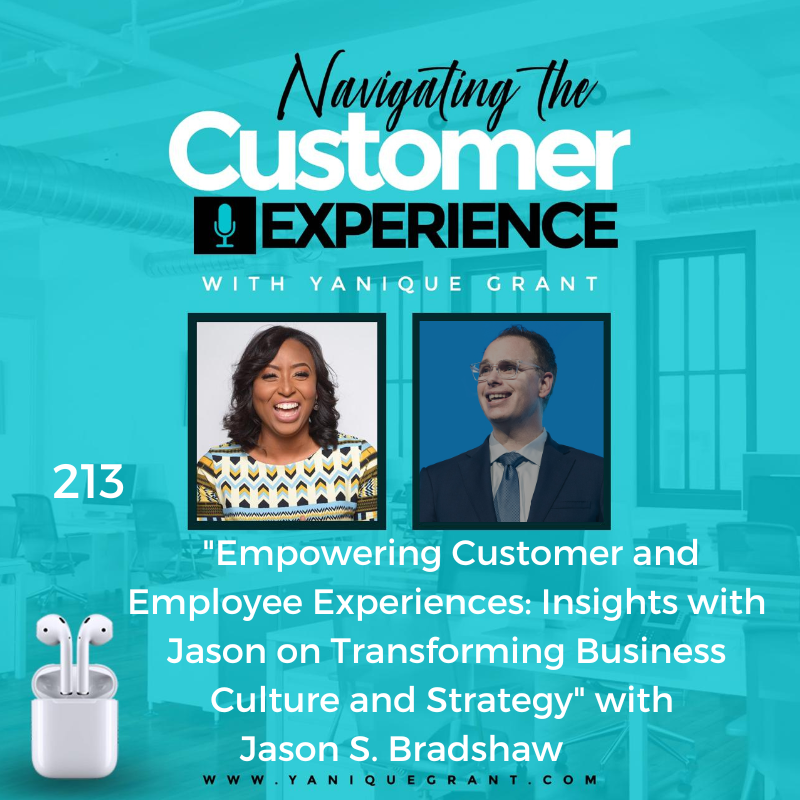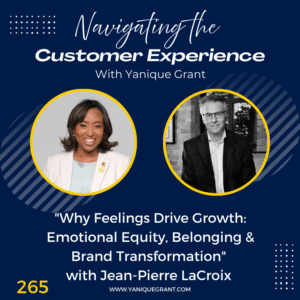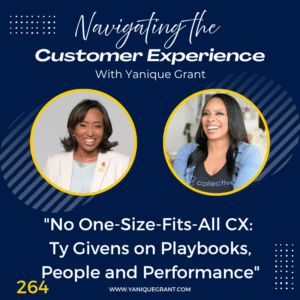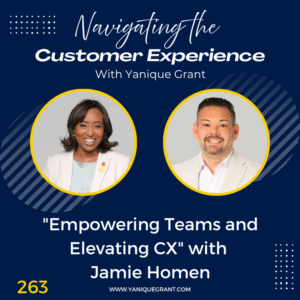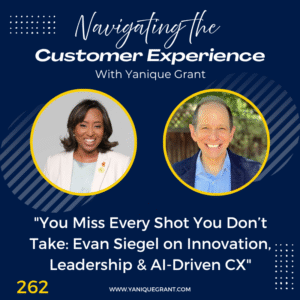Jason S. Bradshaw, at 14 years of age started his first business by 21. He had started and successfully exited 3 separate businesses. In every instance, he disrupted the marketplace and won by delivering great customer experiences. He has worked for some of the world’s most recognizable brands like Target and Volkswagen, helping them transform the experience they deliver and grow profits.
Today he works with businesses of all sizes to super charge their growth, all still with a focus on the experience they deliver.
Questions
• You were on our show, I think it was back in 2021. Talk to me about what’s happened since then, how have things been for you?
• Could you tell us about the book that you had before It’s All about CEX!: The Essential Guide to Customer and Employee Experience, some of the key tenants or themes that came out across that book?
• As it relates to how to start improving the experience for your customers and your employees without needing to invest in additional money, what’s one thing that we can start with?
• As it relates to the employee experience versus the external customer experience, which one would you give more attention to?
• You spoke a little bit earlier about two books you’re currently working on but they haven’t been published as yet. Could you share with us what those books are going to be about?
• Are there any trends as it relates to customer experience that you’re seeing currently that you believe will continue to be big things for 2024? And two things that you believe organisations should be looking to focus on for their organisation as it relates to strengthening their customer experience or growing your customer experience? What would those be?
• What’s the one online resource, tool, website or app that you absolutely cannot live without in your business?
• Can you also share with our listeners, what’s the one thing that’s going on in your life right now that you’re really excited about? Either something you’re working on to develop yourself or your people.
• Where can listeners find you online?
• Now, before we wrap our episodes up, we always like to ask our guests, do you have a quote or a saying that during times of adversity or challenge, you’ll tend to revert to this quote, it kind of helps to get you back on track if for any reason you got derailed or you got off track, the quote kind of gets you back there. Do you have one of those?
Highlights
What’s Happening with Jason Now!
Me: Now, I know that you were on our show, I think it was back in 2021. Talk to me about what’s happened since then, how have things been for you?
Jason shared that things have been busy. He’s finalizing the manuscript on not one but two new books which will come out early in the new year. He’s also been working with some really unique organizations, in various ways as interim Chief Growth Officer as a pure consultant. And of course, continuing to do keynote presentations and his work supporting leaders and boards across the globe, transform the experiences they deliver. It’s been a really unique time watching organizations of all shapes and sizes, navigate this post pandemic world, and what they’ve considered a priority and what they haven’t.
About the Book – All about CEX!: The Essential Guide to Customer and Employee Experience – Key Tenets from the Book
Me: So, for those of our listeners that would not have tapped into your previous episode with us. Could you tell us about the book that you had before It’s All about CEX!: The Essential Guide to Customer and Employee Experience, which is one of the top reasons we had brought it on. That book was so amazing, could you tell us about some of the key tenets or themes that came out across that book?
Jason shared that It’s All about CEX!: The Essential Guide to Customer and Employee Experience, that was his first walk. And it was a bit of a passion project to start with, because he’d always wanted to write a book. And he finally put the theory into action and wrote a book that was designed to help any individual in an organization understand a couple of key things.
Firstly, the key link between customer and employee experience, you can do some tactical things to improve the customer experience for a short period of time, but if you really want to maintain and differentiate the experience that you deliver to your competitors, then you also need to focus on the employee experience. So, they tackle that in the book.
They also tackle in the book how customer experience is not a soft measure, it’s quite often seen as hugging your customers, or something that’s rather soft. But actually, in the book, you’ll discover that there’s some really strong commercial ties and commercial impacts to the work of a true customer experience professional.
And then the third area that they explore in the book is how to actually go about getting started. It always frustrates him, throughout his career where he’s worked in 7 different industries, banking, finance, government, automotive, retail, etc.
It’s always frustrated him when he’s turned up to an organisation and the first thing that he hears is, “We haven’t been able to do anything because we don’t have the money to start.”
And he’s like you can start today, you do not need to throw millions of dollars at a problem to start improving it. And in the book, he gives a really practical step by step guide on how to start improving the experience for your customers and your employees without needing to invest in additional cent or build out a new system. Of course, he talked about some of that stuff as well in the book, but the key message is just get started and here’s the way on how to do it.
Improving the Customer and Employee Experience
Me: So, I like the train of thought as it relates to so you don’t need millions of dollars to start, but let’s say you have a CEO in front of you that says, but Jason, it takes money, it costs money to make money and to train the staff, to get them to be customer oriented, to bring in a consultant, we don’t have the resources, we don’t have an HR department, we don’t have a resource person internally that we can use. What’s one thing that we can start with then since you’re suggesting we can do this without millions of dollars invested?
Jason shared that the first thing is to define what great looks like and measure yourself against that. So, if a CEO came out today and said, “I think the company is successful if all of our phones are pink and I’m going to measure how many of our phones in the company are pink.” Well, all of a sudden without training anybody, without spending a cent on banners or education programmes, or retreats to get people inspired, the sheer fact that you’ve stated that it’s a key goal, this sheer fact that you’re measuring, it means that someone in procurement is going to start buying pink phones. And it’s the same with customer experience and employee experience, define what great looks like and define how you’re going to measure it, and start doing that even in the most rudimentary ways. But the moment you start talking about it, the moment you start putting focus on it, people will start to move towards it.
Now the problem is, most organizations say we want to be known for delivering great customer service or delivering great customer experiences and they stop there.
And then 6 months down the track they say, “Well, we said we wanted to be famous for this. But nothing’s improved.”
Well, you’ve missed the key point. The key point is you’ve got to define what great looks like. So, what do you mean when you say, we want to be great at customer experience, what defines or represents great in our terms, and then you have to say, and I’m going to measure it this way and this will be the marker of success. When you combine that clarity, you don’t need to instantly spend money on new systems or new profiles or training because people will start gravitating towards it. But if you don’t have the clarity, people will just fumble around and they won’t deliver any improvements. In fact, in many instances, without clarity, you’ll go backwards.
Employee Experience Versus External Customer Experience
Me: Now, you talk a lot about great customer experiences, and defining what that looks like what great looks like, what are your views, since this is an area that you were practising, and you have a lot of experience in it as it relates to the employee experience versus the external customer experience? Do you believe there’s a direct correlation between the two? And if you were to let’s say for example, focus on one more than the other, which one would you give more attention to?
Jason shared that that’s the million dollar question always. If you have to choose one, the area to start out on is the employee experience. And he says that because try to get a happy employee to deliver a bad experience, it’s less likely. Try to get a disgruntled employee to deliver a great experience, almost impossible because they’re so caught up in their own drama and their own challenges that they’re faced every day.
An organization that gets a specialist to come in, they wrote a 300 step process to deliver a great customer experience. But they don’t train their team members, and they don’t align their systems to the processes. The team member can’t deliver that great customer experience that the process was designed to deliver, because everything is getting in the way. But if you say to an employee, I’m going to invest in you, I’m going to make this a great place to work, and you are going to want to see the company succeed, then they will find a way to deliver a better experience for customers.
Because intrinsically, they’re being motivated by the great experience that they have. So, if you have to choose, absolutely go with employee experience first. The caveat he’ll put on that though, is yes, you can start with employee experience, but you still have to define what great looks like for the customer.
Books Jason is Currently Working On
Me: Now, you spoke a little bit earlier about two books, I think you mentioned that you’re currently working on but they haven’t been published as yet. Could you share with us what those books are going to be about?
Jason shared that one book is a really practical application book. And what he means by that is you can turn to almost any page in the book, and read just that page, and go and do work that will improve the experience of your customers, of your products, of your employees. It’s designed in a way to encourage action, and take away some of the fear of not knowing what to do. So, think of it as a bit of an Experience Management Handbook.
The other book is very similar to his first one in the sense that it’s more traditionally, a more traditional business book. And it explores this concept of moving beyond the singular transaction with a customer or with an employee and focuses on what’s next. What does a customer really need to see to be fiercely loyal, for example, to your organisation, and again, it will provide some practical guides to how you go about implementing some of the concepts he talked about in the book.
And importantly, it’s written in a way that it doesn’t matter if you’re the team leader of an organization or the CEO, you can see yourself having success and delivering success and growing your business through it.
Me: All right, and when are those books expected to hit the newsstands?
Jason stated that the year’s getting away on us. So, both books will come out early next year, towards the back end of January.
Focus for 2024
Me: Now, we’re embarking on a new year, as you just mentioned before, we’re less than less than 60 days. Are there any trends as it relates to customer experience that you’re seeing currently that you believe will continue to be big things for 2024? And if you are to, let’s say two things that you believe organizations should be looking to focus on for their organization as it relates to strengthening their customer experience or growing your customer experience? What would those be?
Jason shared that he’s going to give three if that’s okay. The first one is specifically aimed at the CX professionals in organizations, you have to tie your work to the return on investment, you have to deliver a return on the investment. He’s seeing companies all around the world, disinvest in customer experience programmes because the CX leaders in those organizations have been unsuccessful in creating a really robust link between their work and the commercial results of that work. And it’s not surprising that CFOs then start to question it, but this work has a commercial element to it, and don’t forget it.
Number two, how can you be the most convenient for your customers?
How can you meet your customers where they are, so that you are integrated into the way that they live versus being a transaction?
How can you go from being a commodity to be a convenient resource that is part of their life?
So, what he means by this is, beyond the sales channels that your customers wanted to be on, offer your customers the communication channels that they want to be on.
If you have customers that are 80 years old, and you have customers that are 20 years old, then yes, you need to have a landline phone number and you also probably need to be able to service them on Tik Tok, to think that you can only do one or the other means that you’re going to have disgruntled customers at some spectrum. And of course, he’s using some broad strokes here with those ages. But you understand his point.
And the third area is think beyond the purchase, beyond the transaction. If you think of Coca Cola, many people could argue that Coca Cola is a pure transaction product, you go in, you pick up the can of soda at the shop, you pay for it, you walk out, you drink it, and the transaction is over, the experience is done, and you move on.
You have fiercely loyal customers that will only drink Coke, they won’t drink Pepsi or any other Cola products, and vice versa for those brands as well. And that’s because they create an environment that associates with the consumers lifestyle choices, they have so much money that they spend on marketing to make you believe that drinking Coke is a lifestyle choice, that talks about you.
Now, he mentioned Coke as an example, because quite often the point that he’s about to share with people, they say, “Oh, well, we just have a product like Coke and they just buy it and consume it and, there’s nothing post the purchase that we can do.” His argument is that post the purchase transaction, you need to find a way to continue to be in the customers conversation, you need to continue to deliver value.
Now, in the sake of a soda, it’s about being seen as a lifestyle choice, a successful lifestyle choice potential. But if you’re selling someone a fridge or a washing machine or a course or a camping tent, whatever you’re selling, how can you help that customer actually leverage the benefits of that product?
Get the most out of that product, so that in six months’ time when they are at their barbecue talking about stuff with their friends, they can say, “You know, I bought this mobile phone or I bought this item or I did this course. And they genuinely wanted me to enjoy it, they genuinely wanted me to be able to use every feature to get the most out of it, to get the most value out of it.” And so, to sum up point three, deliver value to your customer, even after the purchase has concluded.
App, Website or Tool that Jason Absolutely Can’t Live Without in His Business
When asked about online resources that he cannot live without in his business, Jason stated that that would be his survey tool. Now, for him, it doesn’t matter what tool you use, there’s lots out there. There’s no secret of the fact that he’s a big advocate of Qualtrics Technology. But Qualtrics is an enterprise grade product is delighted for small businesses. There’s a whole range of products out there. But the reason he says his survey tool, is because if you don’t invite your customers and your employees and the marketplace in general to provide you with feedback, if you don’t make it easy for them to give you unsolicited feedback, well, then, are you really listening? Are you really trying to get a pulse of what’s working and what’s not working in your business?
And so, for him, it’s from a pure tactical perspective. For him, it’s that tool and he’d encourage everyone to have that tool that lets them get structured and unstructured feedback from customers, employees and the marketplace at general. And so, he always go to that survey tool. But outside of that, at a personal level, it’s not really a tool but he’s a big believer in continued personal learning. And so, he read 30 odd books a year, so, you could imagine that audible sits on his mobile phone and always has a book ready for him to listen to when he’s in the car or sitting on the plane.
What Jason is Really Excited About Now!
When asked about something that’s he’s really excited about, Jason shared that these two new books that are coming out, they are absolutely one of the passions that he’s working on at the moment. And he’s not just saying that because he wants people to buy it, of course, he does want people to buy it. But they’ve taken on a life of their own. One book is actually technically two years overdue, but that’s okay. And the reason he says it’s okay is because he listened to what was happening in the marketplace and to what his customers were experiencing, and said, “No, the book I was writing is not the book people need.”
And so, he hopes and trust that when people get the actual version that the final manuscript that he’s written, that they will see that customer experience isn’t an option, focusing on it isn’t an option, it is essential to driving your business forward and the book has the tools to help them deliver it. It really is something that’s just taken on a life of its own and as he said, it’s definitely two years overdue, his publisher, they’d like to have published it quite a while ago.
But it is so important to him that he gets this book right because he wants to really leave a dent in the world and improve the lives of customers, employees, through his work.
And then at a more personal level, he’s working on a couple of new projects that he’ll be launching in early December, which are online programmes designed to help businesses, specifically small to midsize businesses break through and have business success.
Where Can We Find Jason Online
Website – www.jasonsbradshaw.com
Twitter – Jason S. Bradshaw
Linkedin – Jason S Bradshaw
Facebook – Jason S. Bradshaw
Quote or Saying that During Times of Adversity Jason Uses
When asked about a quote that he tends to revert, Jason stated that he absolutely does. And the quote is, “No matter what, you’ve got this.” And it’s so simple, but it was something a colleague said to him once and it’s just is a reminder that whatever the challenge is, it doesn’t matter, because you’ve had challenges before and you’ve got over them, you’ve succeeded and you can do it again. So, no matter what, you’ve got this.
Me: Thank you so much for sharing Jason.
So, Jason just wanted to extend our deepest appreciation and gratitude for you coming back on our podcast as a returning guest, that’s an awesome milestone, so grateful that you made the time to come back again, especially seeing that you’re literally on the other side of the world. But all of the great insights that you shared with us today, reminding us about the things that were in your previous book, CEX, so those of our listeners that would like to tap into that we’ll definitely have the link in the show notes of this episode for our awesome resource. And of course, to keep in touch with you for your new books that are coming out to the latter part of January 2024. So, we are extremely grateful that you decided to come and join us again for a quick conversation on mastering customer experience. It was great, thank you, Jason.
Please connect with us on Twitter @navigatingcx and also join our Private Facebook Community – Navigating the Customer Experience and listen to our FB Lives weekly with a new guest
Links
• It’s All about CEX!: The Essential Guide to Customer and Employee Experience by Jason S. Bradshaw
• Episode 145: Understanding The Power of Delivering An Amazing Employee and Customer Experience – Released – October 05, 2021
The ABC’s of a Fantastic Customer Experience
Grab the Freebie on Our Website – TOP 10 Online Business Resources for Small Business Owners
Do you want to pivot your online customer experience and build loyalty – get a copy of “The ABC’s of a Fantastic Customer Experience.”
The ABC’s of a Fantastic Customer Experience provides 26 easy to follow steps and techniques that helps your business to achieve success and build brand loyalty.
This Guide to Limitless, Happy and Loyal Customers will help you to strengthen your service delivery, enhance your knowledge and appreciation of the customer experience and provide tips and practical strategies that you can start implementing immediately!
This book will develop your customer service skills and sharpen your attention to detail when serving others.
Master your customer experience and develop those knock your socks off techniques that will lead to lifetime customers. Your customers will only want to work with your business and it will be your brand differentiator. It will lead to recruiters to seek you out by providing practical examples on how to deliver a winning customer service experience!

